Jim Austin (Jimages) Apogee Photo Coach, has been leading photo workshops over the holidays, and suggests we try something completely different this season.
Christmas lights. Camera. Action! Check out his ideas before you photograph your tree or head for your holiday lights.
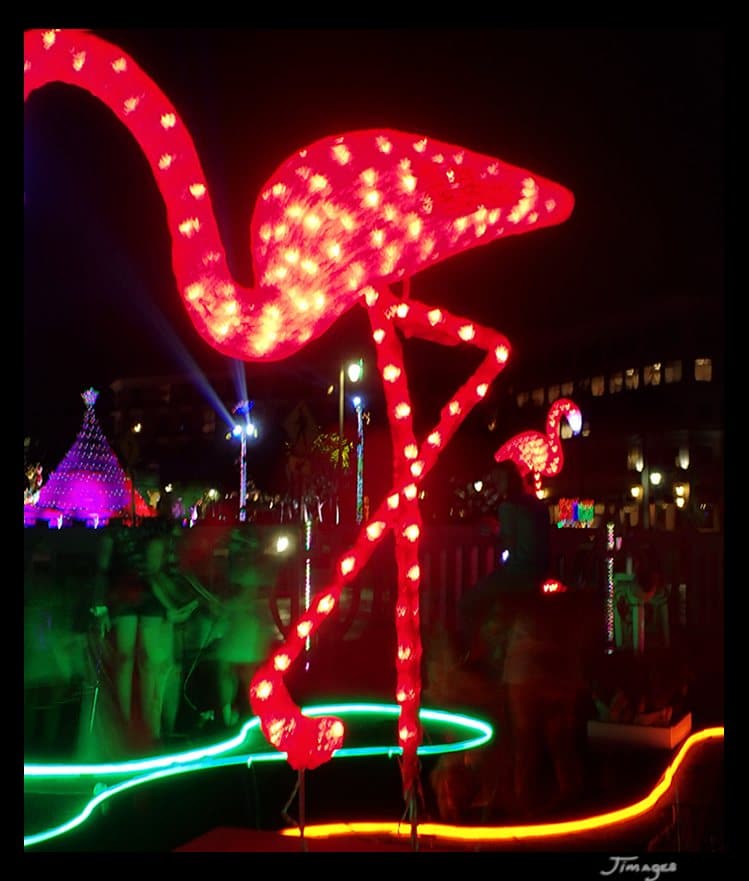
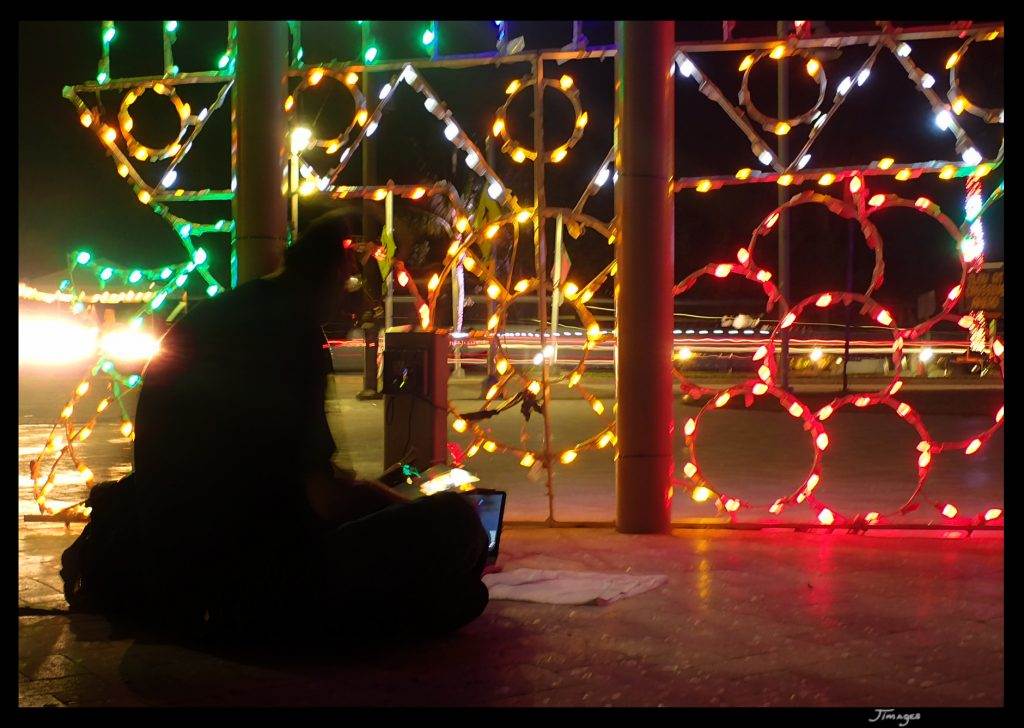
Near holiday lights, a man downloads a video to his laptop.
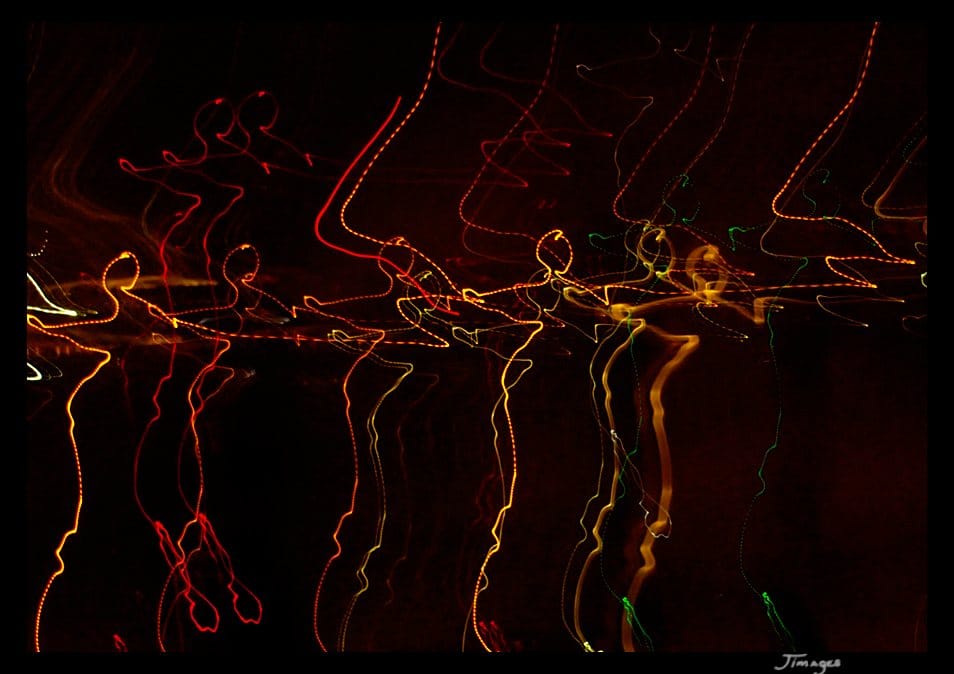
Tired of the same old holiday shots? This season, when you are shooting your local holiday lights, have FUN, and try out these different tips: Respect the Frame, add Color contrasts up close, and explore an excellent in camera method for compositing light . . .
I. RESPECT THE FRAME:
Look at the frame as well as through it.
Each time we raise the viewfinder to our eye, we intentionally impose a frame. Its four edges define the space in our photograph. To make simpler compositions, it helps to think about the frame. This means making verticals, planning how the frame edges will harmonize with the shapes in your shot, and remember that your frame always works with or against your image elements.
Successful framing happens when photographers have a clear intent. The key question is: Did I remember to look at the frame as well as through it?
Try to exclude all distracting elements. A distracting element is any thing that does not contribute to the main subject, such as brightly lit objects that are not the main subject..
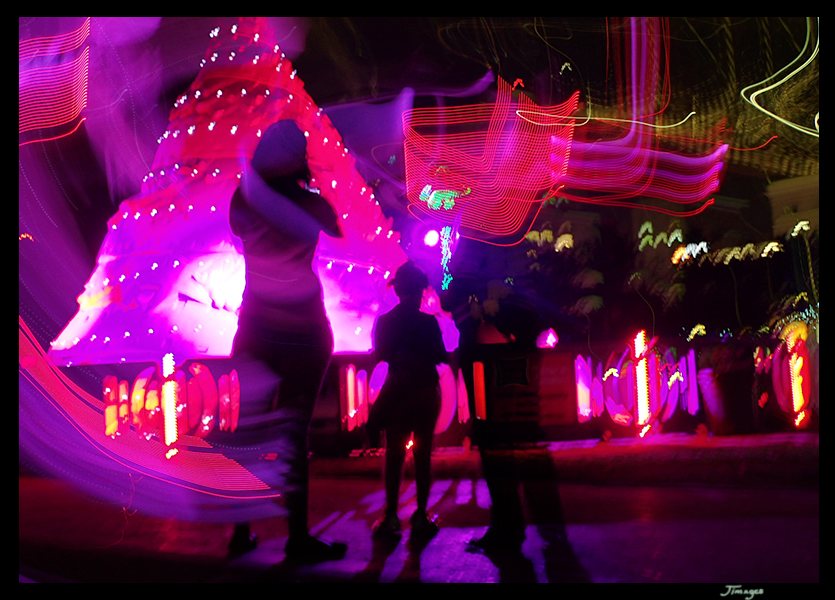
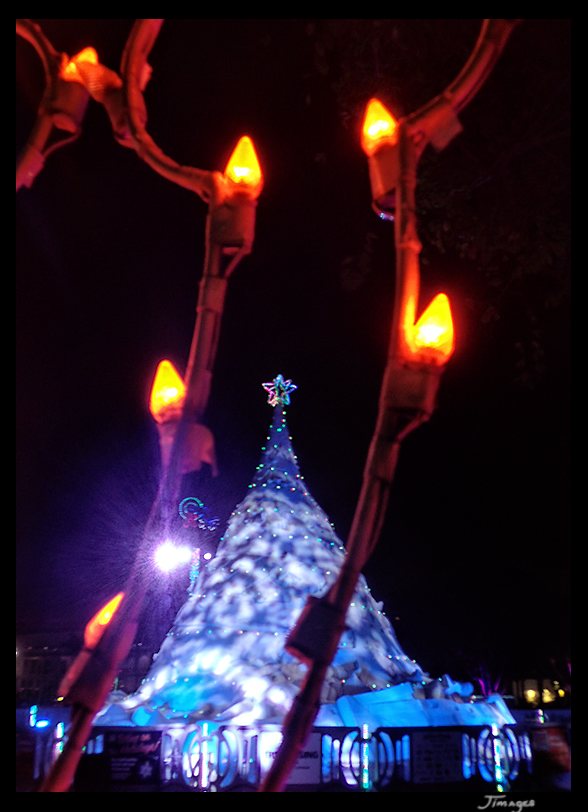
When you compose, ask yourself: “How does my frame interact with the elements in my photograph? Here, in this Live composite, the bright white spotlight is a distracting element that draws the eye away from the intended elements.
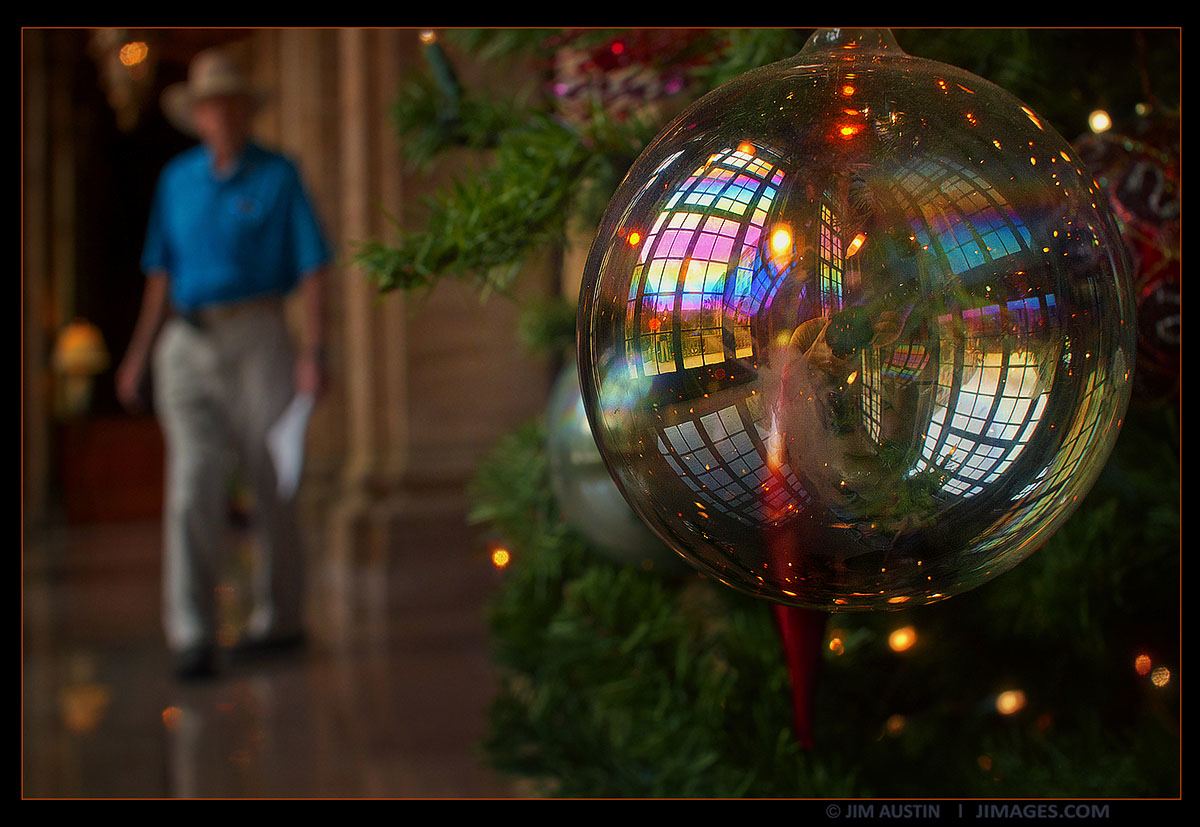 II. CATCH COLOR UP CLOSE
II. CATCH COLOR UP CLOSE
Wanna grab your viewers eye? Get close to some colorful stuff.
In our minds eye, we seem to be closer to our subject than it appears when we look at our compositions later on. Wide angle lenses, in particular, have a perspective that can exaggerate the perceptual distance between your camera and the subject. To make more engaging compositions this season, get in super-close to your subjects, such as your lights and your tree.
III. IRRESISTIBLE TECHNIQUE FOR HOLIDAY NIGHT SCENES:
Creative, fun, in camera technique for night shots, underground caves, and light painting.
Olympus has produced its Tough series of cameras for several years. The TG-4 tough waterproof camera, has a scene (SCN) mode called Live Composite. It’s simple. The shutter takes a number of pictures and combines them in-camera, creating a composite of just the moving parts of the scene.
How it works. You lightly tap the shutter release. With each passing second, the camera adds more light to your composited shot. This mode is particularly good for night cityscapes with car light trails and for fireworks. I used it to capture bursts of light during a holiday searchlight and music show. The Live Composite is a lot of fun at night, but that’s not it’s best feature.
This technique is also excellent for light painting, and with portrait models in low light conditions.
To get better results from Live Composite, experiment with the amount of exposure time, as there is a sweet spot for getting the right amount of light on the sensor. The Olympus camera keeps adding new light from moving sources until you tap the shutter button a second time. So, you can even walk away from the camera, while it is light compositing, and paint into your scene with your light tools.
Live Composite lets us produce results inside camera, previously possible only with Photoshop layering and image post processing.
Thanks for your comments, Jim.
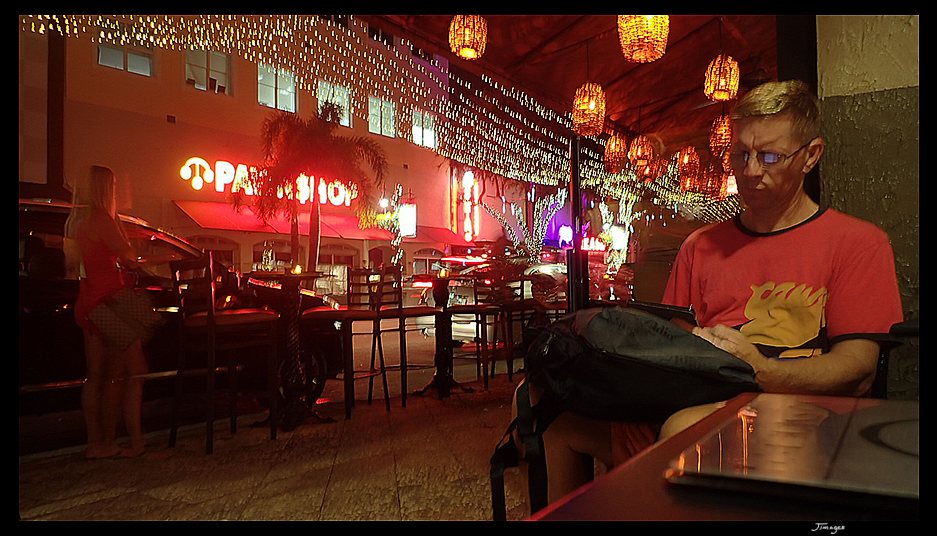
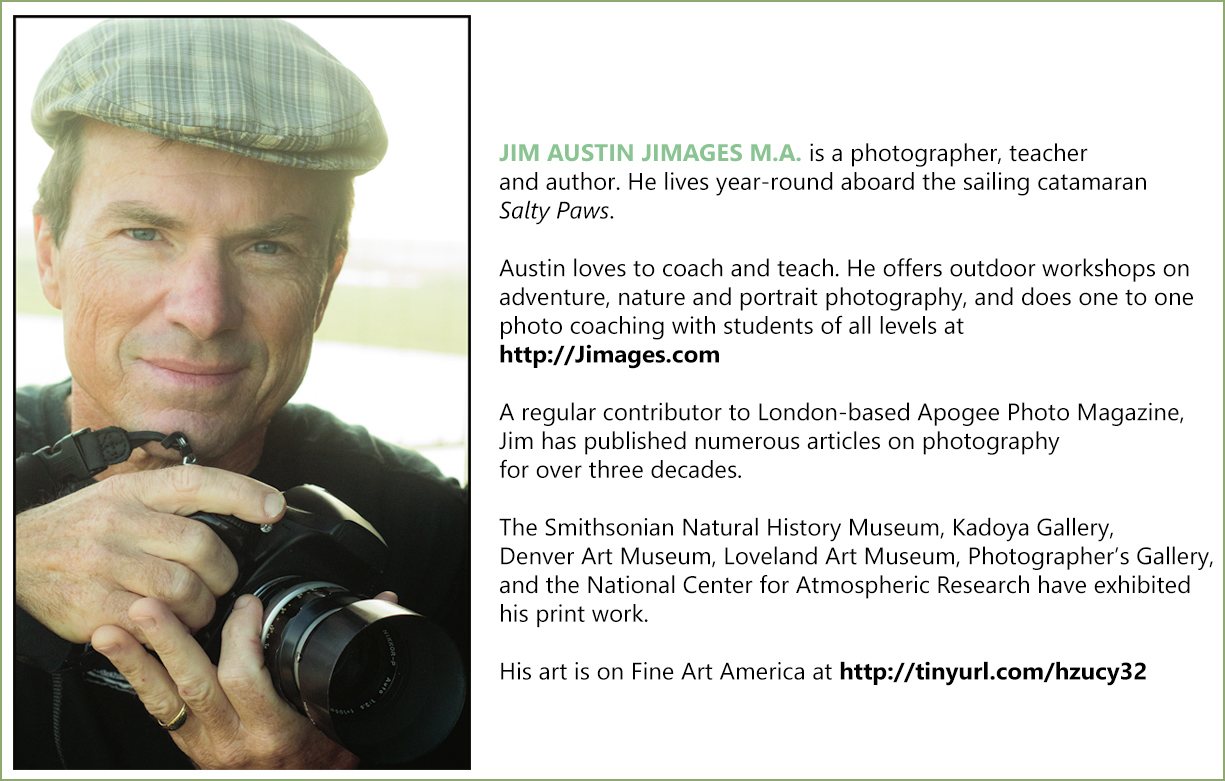

Leave a Reply